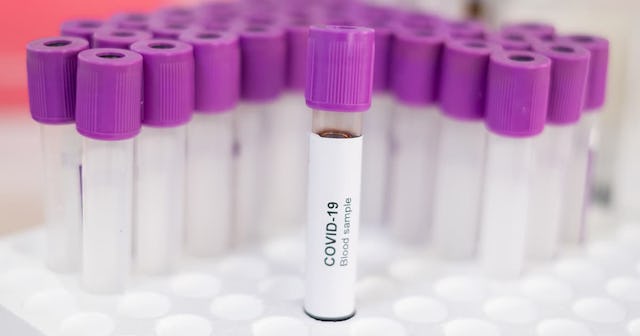FDA Approves Test That Could Detect Coronavirus In About 45 Minutes

The test will begin shipping next week with plans of using the product by the end of the month
The U.S. Food and Drug Administration (FDA) has approved the first rapid coronavirus diagnostic test with a detection time of about 45 minutes. The test was developed by California-based molecular diagnostics company Cepheid.
According to Cepheid’s statement published on March 21, the company received Emergency Use Authorization from the FDA for the test called Xpert Xpress SARS-CoV-2.
The test, which will be used primarily in hospitals and emergency rooms, will begin shipping next week with plans of using the product by the end of the month, the FDA’s news release states.
Currently, samples are sent to a centralized lab where results can take days.
“The test we’re authorizing today will be able to provide Americans with results within hours, rather than days like the existing tests, and the company plans to roll it out by March 30, which is an incredibly rapid timeline for such an effort,” said the U.S. Department of Health and Human Services (HHS) Secretary Alex Azar.
Azar added that “with the development of point of care diagnostics, Americans who need tests will be able to get results faster than ever before. More and more options for reliable, convenient testing are becoming available at an incredibly rapid pace, thanks to the hard work of our FDA team and the ingenuity of American industry.”
Neither releases stated, however, how much the test will cost.
“During this time of increased demand for hospital services, clinicians urgently need an on-demand diagnostic test for real-time management of patients being evaluated for admission to health-care facilities,” Dr. David Persing, MD, Ph.D., chief medical and technology officer at Cepheid, said in the statement. “An accurate test delivered close to the patient can be transformative — and help alleviate the pressure that the emergence of the 2019-nCoV outbreak has put on healthcare facilities that need to properly allocate their respiratory isolation resources.”
FDA Commissioner Stephen Hahn said in the FDA’s release that “today marks an important step in expanding the availability of testing and, importantly, rapid results.”
“Point-of-care testing means that results are delivered to patients in the patient care settings, like hospitals, urgent care centers and emergency rooms, instead of samples being sent to a laboratory,” Hahn added.
Cepheid President Warren Kocmond said in the Cepheid statement that Cepheid currently has nearly 5,000 GeneXpert Systems in the U.S. capable of point-of-care testing and for use in hospitals. Worldwide, they have more than 23,000 automated GeneXpert systems.
“Our automated systems do not require users to have specialty training to perform testing,” Kocmond said. “They are capable of running 24/7, with many systems already doing so today.”
Vice President Mike Pence announced during the March 21 news briefing on coronavirus response that more than 195,000 Americans have been tested for the virus, cases have surpassed 22,000, and about half of those confirmed cases are in New York.
“We want to remind Americans as Dr. Fauci will emphasize in a moment: If you don’t have symptoms, don’t do a test,” Pence said. “It is another way that the American people can make sure that we are preserving the resources that our health care workers need to administer and support those who are dealing with the coronavirus and other illnesses.”
Pence also said during the news briefing that he and his wife Karen would be tested for the coronavirus, after a staff member in his office test positive this past week. They both tested negative.
Information about COVID-19 is rapidly changing, and Scary Mommy is committed to providing the most recent data in our coverage. With news being updated so frequently, some of the information in this story may have changed after publication. For this reason, we are encouraging readers to use online resources from local public health departments, the Centers for Disease Control, and the World Health Organization to remain as informed as possible.
This article was originally published on